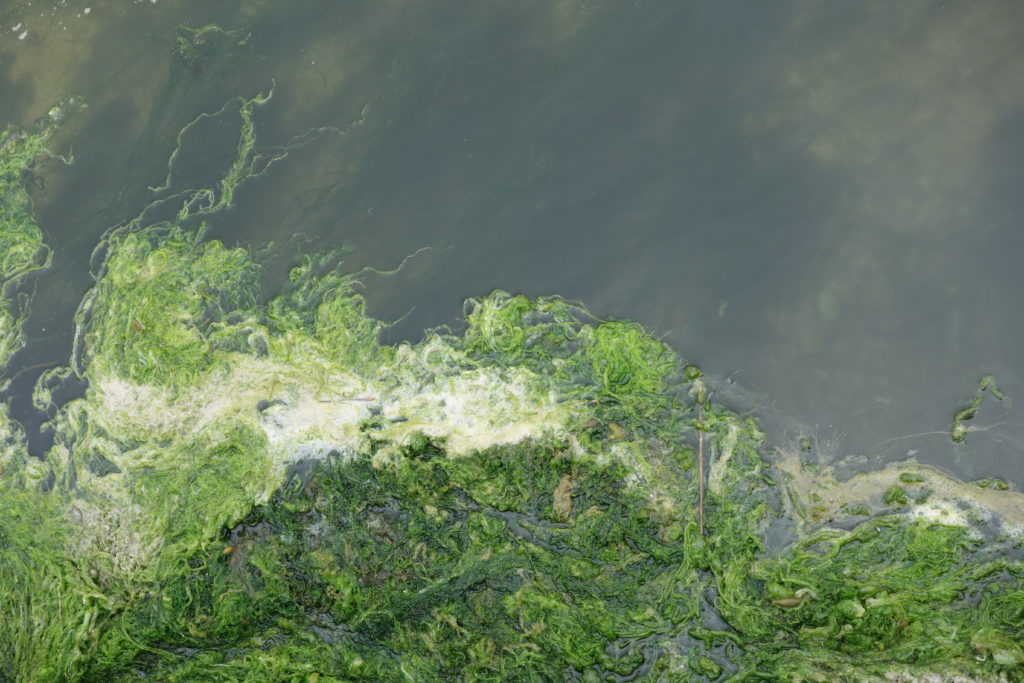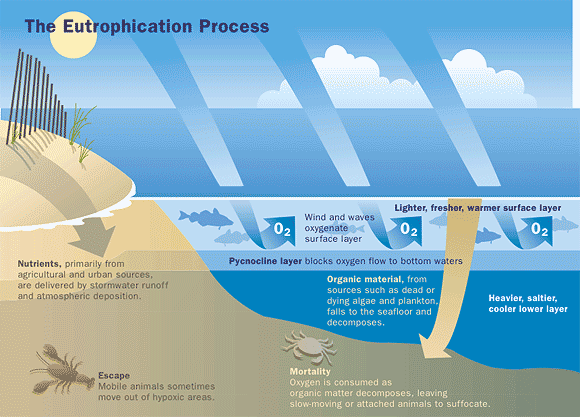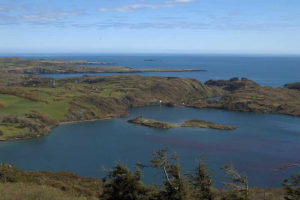
Eutrophication occurs due to nutrient loading which can arise from different sources, both natural and anthropogenic. The increase in nutrients (in particular phosphates, and in the case of salt water environments, nitrogen) lead to the overgrowth of aquatic plants and algae. The subsequent decomposition of those plants and algae consumes oxygen and depletes dissolved oxygen levels within localized environments.
Algal blooms also reduce sunlight access which is necessary to regulate oxygen levels through photosynthesis. These depletions in available oxygen can have adverse effects on biodiversity as it can lead potentially hypoxic or anoxic ‘dead zones’ causing die-offs of plants in littoral zones (Chislock et al., 2013) and increased mortality in marine organisms. Algal blooms therefore impact on localized marine environment food-webs as well as water visibility and quality.

Human Activities that Accelerate Eutrophication
While eutrophication occurs naturally as bodies of water age, human activity has accelerated this process due to:
- Soil retention (nutrient loading cased by human activity)
- Industrial run-off (chemicals may enter water)
- Domestic run-off (use of detergents)
- Agricultural run-off (leaching of nutrients from fertilizers)
Red Tides

Algal blooms are of particular danger to sessile, benthic organisms, such as anemones and corals, which do not have the ability to move to an area with higher oxygen levels. Also known as red tides, these blooms occur almost annually around the Irish coast, even in areas free from industrial influence like Lough Hyne Marine Reserve (Jessopp et al., 2007).
Many of these red tides also contain harmful toxins that can become airborne, causing health complications in humans and animals alike (Watkins et al., 2008). These toxins can also bio-accumulate in filter feeding organisms, like mussels, which is what causes neurotoxic shellfish poisoning, a disease caused by the consumption of contaminated shellfish.
Localised eutrophication is also a cause for concern when it comes to fish farms in shallow bays and estuaries, especially when it comes to sensitive habitats like the maerl beds located in Castletown Berehaven (Blunden et al., 1997).
With aquaculture facilities of both finfish and molluscs being found in Bantry Bay, Dunmanus Bay, Roaring Water Bay, Baltimore Harbour, and in the areas around Sherkin Island, this has the potential to become a major threat to the marine ecosystem. However, due to the EC’s Water Framework Directive, this issue is becoming less prevalent.
The causes, effects, and responses to eutrophication are also discussed on the following pages:

